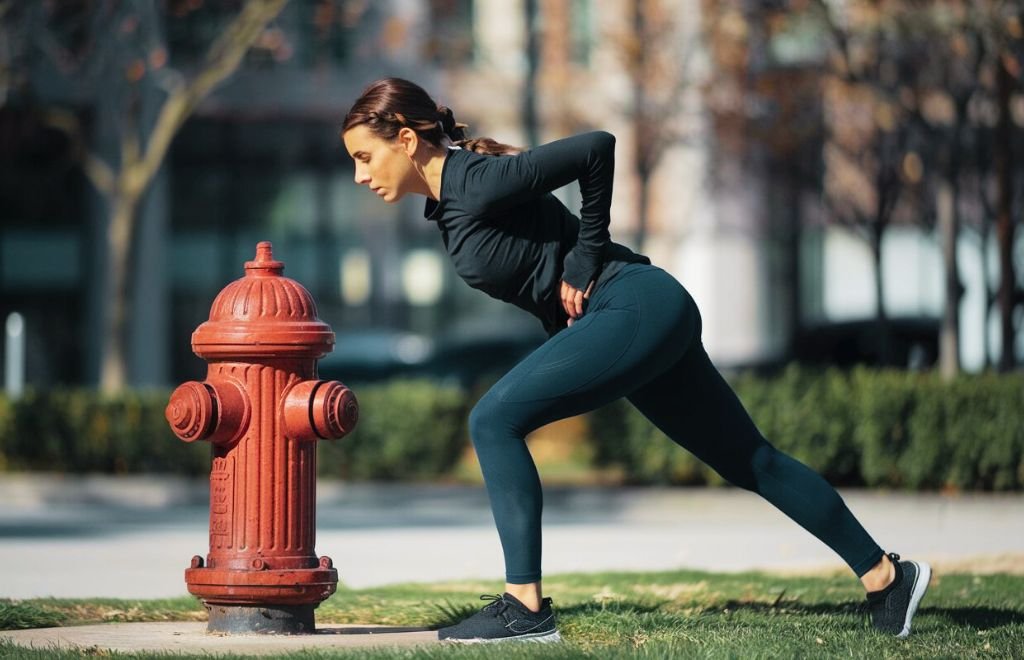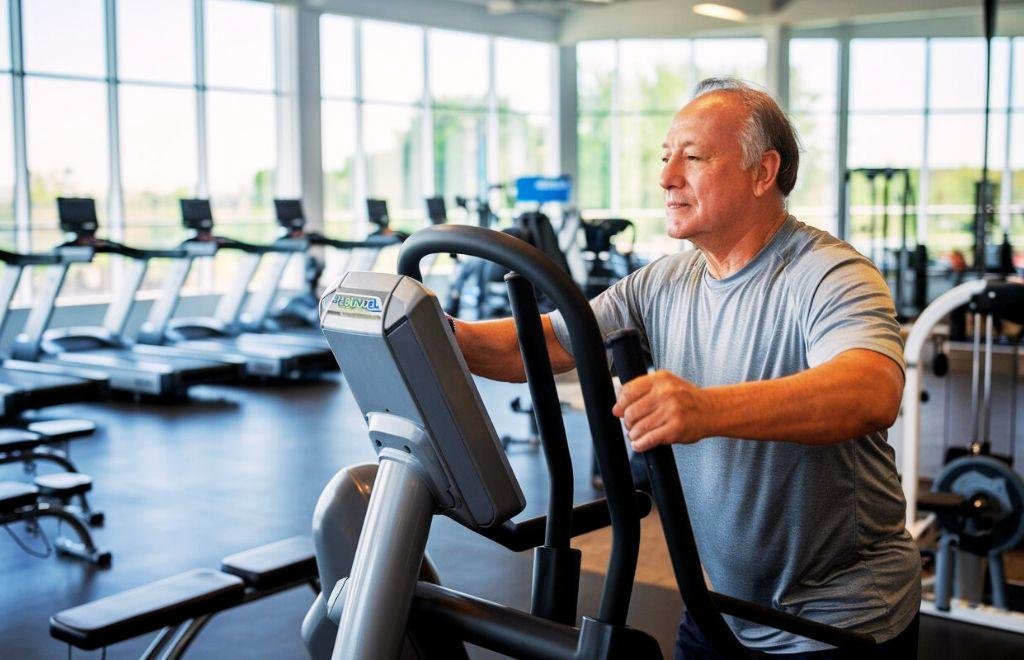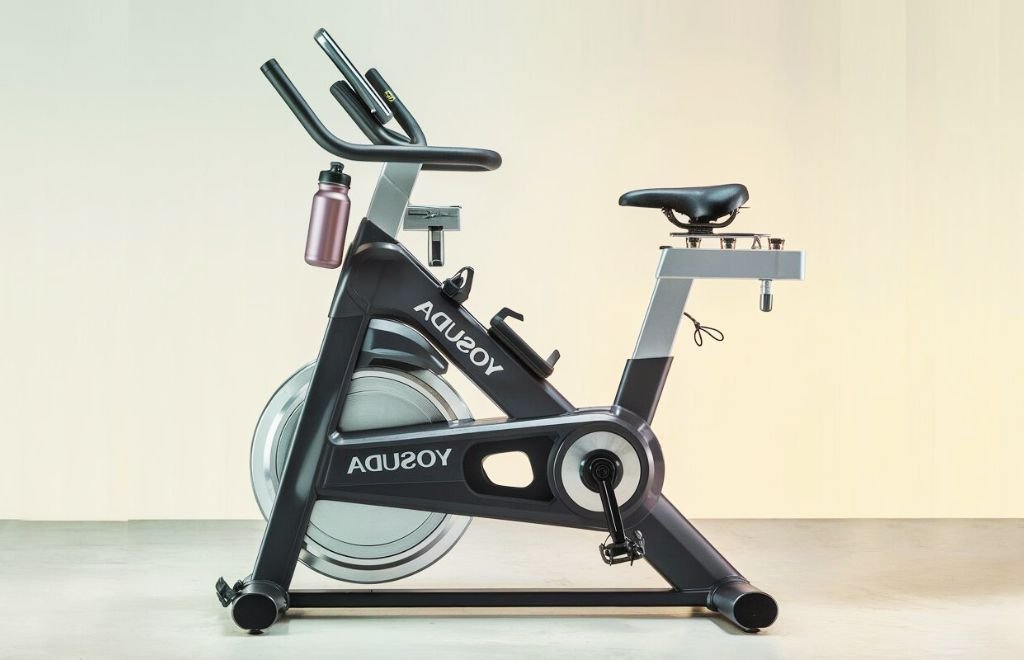The advantages of fire hydrant workouts and their technique will be covered in this page. We will also offer a detailed walk-through tutorial for every workout.
Without any equipment, this one action works the hard-to-target gluteus Medius and addresses lifeless butt syndrome.
Though its name may make you laugh, the fire hydrant offers no joke glute exercise. Targeting the hip abductors—muscles that move your leg away from the midline of your body—more especially,
the gluteus mediums and gluteus minimum, the harder-to-reach neighbors of the gluteus maximus, your largest glute muscle, makes this a great accessory move for leg day.
You might also observe it in Pilates courses and warm-ups; both forms of exercise praise their glute-activation advantages. The position also needs you to fire your core to keep you steady and prevent lower-back rotation. victory!
So, for all of you asking, “What is a fire hydrant exercise?” we will walk you through the benefits of the exercise, what muscles it targets and how to nail it, every time.
Although the glutes are a popular target, go-to exercises usually ignore the gluteus medius. Though they are far smaller than the maximus, building a well-rounded backside, a strong core and strong glutes depends on training this muscle.
Targeting the glues, outer hip, low back and core, the fire hydrant workout increases body stability and strength. The fire hydrant exercise will help you build a well-rounded booty, whether your low back discomfort calls for strengthening your complete core (not just your abs!), or you are seeking cross-training routines to assist your walking or jogging program.
Methods of handling fire hydrants

Using the correct form and technique will help one maximize fire hydrants exercise. This will help you to master them.
A sort of bodyweight exercise are fire hydrants, sometimes known as quadruped hip abductions. Though some variations also train the core, their primary working muscles are the gluteus maximus.
Regular use of fire hydrants can help your glues shape, ease back discomfort, and reduce your risk of injury.
As a bodyweight workout, the fire hydrant requires no specific gear. You really only need a mat.
Starting on all fours in a tabletop posture, have your wrists under your shoulders and knees under your hips. Check your core is engaged and your back is straight.
Keeping the knee bent at a straight angle, raise your right leg out to the side while your weight is equally divided between your hands. ‘Consider showing the ceiling the outside of your right knee,’ Taylor advises.
Hold two seconds then gently bring the leg back to the starting point.
over your hands, place your shoulders; over your knees, your hips. Looking down, tighten your core.
Lift your left leg 45 degrees away from your body. Maintain a 90-degree knee angle.
To finish one repeat, lower your leg to the starting point.
Three sets of ten times. Proceed with the opposite leg in same manner.
Strategies
Maintain stability of your pelvis and core. Just your hip should be moving. Your hips and glutes won’t activate as needed otherwise.
Point your foot opposite the wall as you raise your leg. This will enable proper rotation of your hip.
For what use is the fire hydrant exercise
increasing hip range of motion
Increasing stability of the lower back
Working on difficult to reach muscles
Hipping warm-up
Getting glute muscles active
enhancing cooperation
Emily Taylor, personal trainer at Fitness Lab, adds, “done correctly, this exercise can help improve both hip mobility and lumbar [lower back] stability.” Before a workout, “it’s fantastic for warming the hips and activating the glutes.”
Often overlooked in conventional glute or lower body exercises, the movement also involves transverse plane rotation.
Many of the lower body movements you perform— squats and deadlifts—occur in the sagittal plane [forwards and backwards]. Joint health and general mobility depend on working across several planes of motion, Taylor advises.
Which muscles does a fire hydrant exercise aim at

Unlike squats, deadlifts and lunges, all exercises you may raise fairly a big load while completing; the fire hydrants exercise can generate some major burn without any weight but yours.
If you would want to raise the ante but do not have any home gym equipment stashed, there is the option to use ankle weights; the fire hydrant exercise can sculpt and tone without any added weight whatsoever.
Particularly the hips and glutes, which are vital for balance, stability, and posture, fire hydrants exercise assist build and tone the muscles in the lower body. More especially, fire hydrants exercise target the:
Found on the side of the hip, Gluteus Medius It’s in charge of your capacity to rotate your hip out and hip abduction—that is, movement of your hip away from your body.
The biggest muscle in the buttocks, the gluteus maximus When you move your leg backwards during activities like walking, sprinting, or stair climbing, the gluteus maximus mostly serves to help you straighten your hip. It also aids in pelvis stabilization during sprinting, jumping, and heavy object lifting.
.”
Hip adductors cause the leg to point toward the body’s midline. The inside of the thigh houses the hip adductors. Working with the hip abductors, they preserve appropriate stability and balance throughout movement.
Helping the leg move away from the body’s midline, hip abductors Found on the outside of the hip, they are crucial for movements including running and walking that call for separating the legs.
During these exercises, they also serve to support the pelvis, so preserving appropriate lower body alignment and preventing too much side-to- side movement.
Including the transverse abdominis and obliques, which help to stabilize the spine and preserve correct posture during the activity, core muscles help.
the benefits of the fire hydrant exercise

Fire hydrants exercise target outer hip and the gluteus Medius. “Dead butt syndrome,” sometimes known as gluteus Medius tendinosis, results from sitting all day weakening of one of the three primary muscles in the buttock.
Found in the upper corners of your glutes directly behind the hipbone, the gluteus medius remains inactive until you include lateral movements in your program.
Because they need a mix of compound and isolation motions to strike correctly, even experienced fitness buffs could overlook working these muscles. Fortunately, fire hydrants exercise are a fantastic gluteus Medius isolation exercise that targets hip abductors and the core as well!
An other plus is that they accomplish this without any tools! With just your body weight, the isolation exercise can tone and tighten the glutes and core, therefore preparing you for more advanced workouts and raising your general degree of fitness.
While expanding the hips and enhancing posture, this isolated workout will definitely provide you a tremendous burn and improve your upper body.
As a pre-workout activation exercise, fire hydrants exercise can also help you wake up the glutes and maximize the results from exercises like squats. To do this bodyweight exercise, one must coordinate and stabilize their core, therefore enhancing their balance.
Through their full range of motion, fire hydrants exercise help you increase hip strength and mobility. For those who spend a lot of time seated, this can especially assist offset the detrimental effects of extended sitting on hip mobility. Strengthening your hips and butt also facilitates performance of tasks including:
Striding
Pursues
Rising from the ground
Rising stairs
stooping to put on your shoes and socks
One great way to increase your gluteus maximus is with the fire hydrant exercise. Certain versions help tone and develop your core, therefore working the abdominal muscles.
The largest muscle in your pelvis and hip area, your glues regulate three main hip motions. Among these are:
Extension of the hips. fire hydrant exercise Your thigh is moved back and away from your pelvis via hip extension. It allows you go up stairs and walk.
External rotation of the hips. This occurs with outward rotation of your leg. You pull out of a car using hip external rotation fire hydrant exercise.
fire hydrant exercise abduction of hip joints. To step to the side, hip abduction raises your leg away from the center of your body.
Since the fire hydrant exercise incorporates all three motions, it’s a great glute workout. It might give your glutes more toned, sculpted appearance. Strong glutes also help with posture, lessen your chance of injury, and ease back and knee pain.
Typical errors people make when operating fire hydrants

It is difficult since the workout calls for balancing on just three limbs. Thus, you should be aware of typical errors and review your form fire hydrant exercise.
Fire hydrants exercise are done on fours. Many people wonder how far apart to position their hands and legs. Put hands straight under your hips and legs straight under your shoulders following this easy guideline. Kenya will be hip-width apart and hands will be shoulder-width apart.
Key is to stabilize your core; this will greatly increase the efficacy of the workout. Tightening your core helps you to achieve good alignment and removes the momentum from the movement.
Your lower back will slink toward the ground without core involvement. This can bring low back discomfort. Thus, always make sure your naval pulls in toward your spine. This will help guard your back and stop momentum from negating glute muscular contraction.
Here are a few more typical errors along with tips for avoiding them:
Spine arching. This could cause injury and strains your back muscles. Maintaining a straight line from your head to your tail bone, keep your core engaged by drawing your belly button toward your spine. Throughout the exercise, squeeze the glute—not the low back.
Head dropped. Watch to make sure your neck lines up with your spine. Try not to search either up or down as you walk. The neck should be straight forward and in line with the spine.
Kicking your leg too high. This can also cause arching of your low back. Try tightening the core to balance weight on both hands. To elevate the leg higher, clients often overarch the back and dip into the other side. Less crucial than control and involvement is height. The knee should stay at 90 degrees and not rise past hip height at the apex of the movement.
Turning to the side. Many of my customers have a tendency to tilt the opposite direction when lifting the leg, hence emphasizing the opposite wrist. We want none of this since it strains the wrist and throws off equilibrium. Try your best to keep the hips in alignment with one another; your body will rotate somewhat when you open your leg out to the side.
rotating the hips. The fire hydrant serves to work your hip and outer glute muscles, not to strain the supporting leg muscles. As best as you can, keep your left and right hips at the same height. Though some asymmetry is unavoidable, particularly in the beginning, practice maintaining your equilibrium.
You are rushing too quickly. You want to keep a regulated tempo instead than kicking the leg out and in with no mind-muscle connection. Taylor declares. And remember that stop at the top.
Other than water hydrants for exercising
Clamshell.
Try a banded clamshell instead of the fire hydrant exercise if you have lower-back trouble.
Lie on your side, bending your knees toward your chest while your hips and knees top one another.
fire hydrant exercise Keeping your feet together, raise your upper knee toward the ceiling as high as you find comfortable without turning your low back.
Assume this posture.
donkey kicks
fire hydrant exercise To look like a table, place your hands, exactly under your shoulders, and knees on the floor. Still bent at 90°, raise your right leg up towards the ceiling such that your thigh almost runs parallel to the floor.
fire hydrant exercise Without hitting the floor, bring your knee back in to starting position and swing it immediately back to the raised position. Spend thirty seconds repeating before switching.
Duck dog
fire hydrant exercise Often called the quadruped as well. Beginning on all fours, get your knees under your hips and arms under your shoulders.
Staying with a neutral spine, look down at the ground.
fire hydrant exercise While you raise your left leg till it is level with your hips, raise your right hand to match your shoulder. Starting from the extended hand, try to create a straight line from extended foot. Holding for ten seconds, lower your limbs gently under control. Again on the other side.
How should one use the fire hydrant exercise
This fire hydrant exercise is quite powerful for tightening the core and the outside glute with correct form. Using these five basic stages will help you to master the correct form.
fire hydrant exercise With your hands under your shoulders, spread your fingers widely, and knees exactly under your hips, get on all fours. Press equally onto both hands and keep this balanced pressure across.
Maintaining back straight, firm abs, and knees at 90 degrees, raise your right knee off the ground slightly.
Maintaining the bend in your knee, reach the right knee out and up to hip height (or somewhat lower for a modification).
Go back to where we started. Here is one repetition.
fire hydrant exercise Ten times on the right side then lower the knee to the ground. Correct to ensure hips are even and your spine is in line before raising the left knee.
Ten repetitions on the left side follow from this
FAQs:
What is the Fire Hydrant exercise?
Aiming for the glues, hips, and core muscles, the Fire Hydrant workout is a bodyweight movement.
You do the Fire Hydrant exercise how?
Start in all fours with hands under shoulders and knees under hips.
Keeping your knee bent, raise one leg out to the side.
Raise as high as comfortable or till parallel with the ground.
Lower back to beginning posture.
For intended repetitions, repeat; then, change legs.
Which muscles benefit from the Fire Hydrant exercise?
mostly works on hip abductors, core muscles, gluteus mediums and minimum.
Exist any tweaks for beginners?
If balance is difficult, novices can utilize a wall for support or execute less leg lifts.
Can I add resistance to make it more challenging?
Indeed, for further challenge you may employ resistance bands or ankle weights.
Is this exercise suitable for people with knee problems?
Usually yes, however if you have particular knee problems see a physical therapist or doctor.
In what frequency should I incorporate Fire Hydrants into my exercise?
Usually a balanced lower body program calls for two to three times a week.
Can Fire Hydrants ease back discomfort?
As strengthening glutes and hips can increase general lower body stability, so can this.










